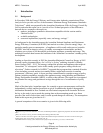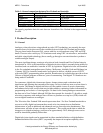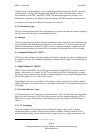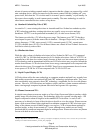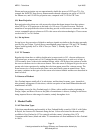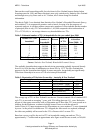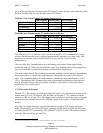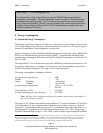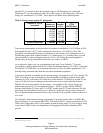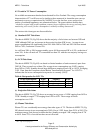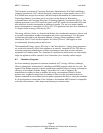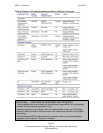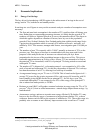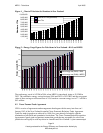
MEPS − Televisions April 2005
Page 14
A study produced for the Energy Efficiency and Conservation Authority by
Wise Analysis Ltd
principal TV is assumed to have the assumed usage of 440 Wh above, but second and
subsequent TVs in a household use only 50% of this energy or 220 Wh per day. The total
energy use would then be 322 GWh. These figures are shown in the following table:
Table 5: Energy usage against TV penetration
Number of TVs in
household
Estimated
number of
households
Total
number
of TVs
Energy usage
GWh
(440Wh/day)*
0 30,600 0 0
1 590,200 590,200 89
2 541,900 1,083,800 123
3 242,200 726,600 73
4 63,000 252,000 24
5+ 26,600 133,000 12
Total all households 1,494,500 2,785,600 322
* Second and subsequent TVs are assumed to use 50% of this figure.
Total energy consumption of all televisions in Australia is estimated at 1,055 GWh pa in 2003
(Harrington & Foster 1999
10
), and is estimated to increase to 1,361 GWh by 2010. The
proportion of total household energy use attributed to televisions is also estimated to be 5% −
considerably greater than a clothes washer (1%), clothes dryer (1%) or dishwasher (1%) and
only marginally less than refrigerators/freezers (10%). All of these household appliances
already carry an energy rating label and freezers are subject to MEPS.
As an indicative figure only, on a population pro rata basis, New Zealand’s TV energy
consumption would be approximately 20% of the Australian estimate or 211 GWh − somewhat
less than the 322 GWh above, even making allowances for New Zealand’s population of TVs
possibly being somewhat older than the equivalent Australian population.
A best guess estimate is probably that the present energy consumption by all TVs is around 320
GWh. According to some commentators, normal appliance technology improvements under
“business as usual” will improve the efficiency of conventional TV designs by around 2% per
year (see Table 9). However changes in the market mix may act in the opposite direction.
Slimline TVs do not necessarily use less energy - for example LCDs use less energy, but
plasma (and projection) TVs use significantly more - 300W or greater. Whilst Table 4B
indicates that slimline TVs have only 5% of CRT market share, LCD sales increased fivefold
and plasma sales threefold in the last year. Ultimately whether the energy usage continues to
fall, will depend whether the market moves more towards LCD or plasma screens in the next 5
to10 years.
New Zealand’s total electrical energy consumption is presently of the order of 40,000 GWh,
and increasing by 2% per annum (800 GWh). The present total TV energy consumption of 320
GWh is thus of the order of 40% of the annual growth in energy usage. A 10% saving by using
some form of MEPS is thus not insignificant in managing the electricity demand profile
growth.
10
Harrington, L & Damnics, M. 2003, Energy Labelling and Standards Programs Throughout the World, National Appliance and Equipment Energy
Efficiency Committee, Canberra.



